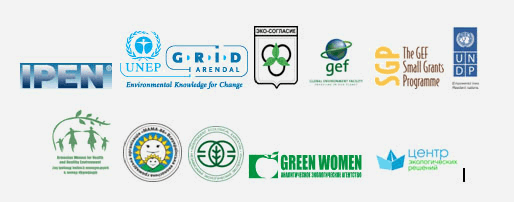Press Release: Toxic Metals in Children’s Products
11 December 2012, c. Yerevan
Control over the children’s products is directly related to the child’s health. In a number of countries there is stable growth tendency in diseases among children and adolescents, one reason of which is the chemicalization of the industry, including the branches of industry manufacturing children’s products.
In 2012 the 6 member organizations of the International POPs Elimination network (IPEN) in the countries of the Eastern Europe, Caucasus and Central Asia region, have conducted research for the content of heavy metals in children’s products.
A total of 568 children’s products randomly purchased from various markets and stores in Armenia, Belarus, Kazakhstan, Kirghizia, Russia and Ukraine were tested. Testing was conducted using a portable X-ray fluorescence analyzer. The main attention was paid to arsenic, antimony, lead and mercury contents, though the contents of more toxic metals such as cadmium and chromium were also determined.
Of 68 toys purchased in Armenia within the frame of the project “Toxic Free Child Toys” approximately 20% of the toys contained at least one toxic metal above levels of concern and the most common problem was lead. The regulatory limit for lead in soil that children walk on is 32 ppm but lead levels in toys that children place in their mouth ranged from 32 ppm – 12,140 ppm – more than 350 times the limit. Most of the toys containing toxic metals were manufactured in China. However, two of these toys were manufactured in Armenia.
The survey of toys has discovered that the contaminated toys amongst the toys purchased in Belarus, Kazakhstan, Kyrgyzstan and Russia make, respectively, 22%, 23%, 27% and 20%.
This way of testing children’s products for heavy metals content is the first research method widely available to the public in the countries of the Eastern Europe, Caucasus and Central Asia region.
Research results are of concern due to the fact that children, due to their desire to put everything in mouth, are subject to additional exposure to heavy metals.
In order to avoid the negative effects of toxic metals in children’s products, it is necessary first of all to improve the national policy in the field of chemical safety regulation with regard to baby products.
Testing results show that not all children’s products contain high concentrations of heavy metals; even there are products which do not contain them at all, which indicates that the manufacturing companies are able to produce toxics free products. The enterprises and manufacturers of children’s products are called upon to reject the use of toxic substances, including heavy metals in production of baby products, as well as to toughen the national legislation and set stricter standards.
In 2001 Armenia, Belarus, Moldova, Kazakhstan, Tajikistan, Russia and Ukraine have adopted ISO 8124-3-2001 standard that applies to toys and children’s products safety requirements and test methods and the total content of toxic substances in products.
In the EC Directive 2009/48/EC of the 18th of June 2009 (entered into force in 2011) the maximum allowable concentrations are significantly lower than in other countries that may lead to a situation where the products prohibited and/or recalled from market of the European Union can appear in the countries or regions having less strict standards.
